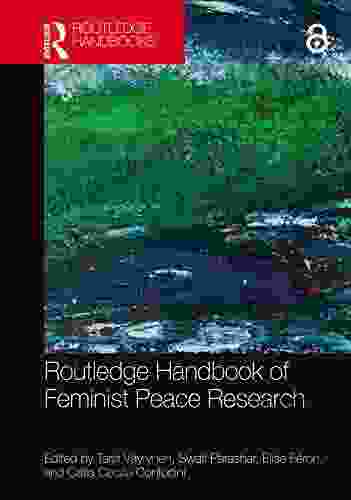Facial Analysis From Continuous Video With Applications To Human Computer Interactions

Abstract
This article presents an overview of facial analysis from continuous video with applications to human computer interactions (HCI). Facial analysis is a challenging problem due to the large variations in facial appearance caused by changes in illumination, pose, expression, and occlusion. However, recent advances in deep learning have made it possible to develop accurate and robust facial analysis algorithms. This article provides a comprehensive overview of facial analysis techniques, including:
- Face detection: The task of finding faces in an image or video.
- Facial landmark detection: The task of locating key points on a face, such as the eyes, nose, and mouth.
- Facial expression recognition: The task of classifying facial expressions, such as happiness, sadness, and anger.
- Head pose estimation: The task of estimating the orientation of the head in 3D space.
These techniques can be used in a variety of HCI applications, such as:
4 out of 5
| Language | : | English |
| File size | : | 3365 KB |
| Text-to-Speech | : | Enabled |
| Print length | : | 158 pages |
| Screen Reader | : | Supported |
- Emotion recognition: HCI systems can use facial analysis to recognize the user's emotional state and adapt their behavior accordingly.
- Gaze tracking: HCI systems can use facial analysis to track the user's gaze and infer their attentional focus.
- Facial gesture recognition: HCI systems can use facial analysis to recognize facial gestures, such as nodding and shaking the head.
- Liveness detection: HCI systems can use facial analysis to detect whether the user is a live person or an impostor.
Facial analysis from continuous video is a rapidly growing research area with a wide range of potential applications. As facial analysis algorithms become more accurate and robust, we can expect to see even more innovative and groundbreaking HCI applications emerge.
Face Detection
Face detection is the task of finding faces in an image or video. This is a challenging problem due to the large variations in facial appearance caused by changes in illumination, pose, expression, and occlusion. However, recent advances in deep learning have made it possible to develop accurate and robust face detection algorithms.
The most common approach to face detection is to use a convolutional neural network (CNN). CNNs are a type of deep learning algorithm that is well-suited for tasks involving image recognition. CNNs can be trained to learn the features that are characteristic of faces, and they can then be used to detect faces in new images or videos.
There are a number of different CNN architectures that can be used for face detection. Some of the most popular architectures include:
- VGGNet: VGGNet is a deep CNN that was developed by the Visual Geometry Group at Oxford University. VGGNet has been shown to achieve state-of-the-art performance on a variety of image recognition tasks, including face detection.
- ResNet: ResNet is a deep CNN that was developed by the Microsoft Research Asia team. ResNet has been shown to achieve state-of-the-art performance on a variety of image recognition tasks, including face detection. ResNet is also notable for its use of skip connections, which help to improve the accuracy and robustness of the network.
- MobileNet: MobileNet is a deep CNN that was developed by the Google AI team. MobileNet is designed to be lightweight and efficient, making it well-suited for use on mobile devices. MobileNet has been shown to achieve state-of-the-art performance on a variety of image recognition tasks, including face detection.
Once a CNN has been trained for face detection, it can be used to detect faces in new images or videos. The CNN can be applied to each frame of the video, and any faces that are detected can be tracked over time.
Facial Landmark Detection
Facial landmark detection is the task of locating key points on a face, such as the eyes, nose, and mouth. This is a more challenging task than face detection, as it requires the algorithm to be able to accurately identify specific facial features.
The most common approach to facial landmark detection is to use a CNN. CNNs can be trained to learn the features that are characteristic of facial landmarks, and they can then be used to locate these landmarks in new images or videos.
There are a number of different CNN architectures that can be used for facial landmark detection. Some of the most popular architectures include:
- Dlib: Dlib is a free and open-source library for computer vision and machine learning. Dlib includes a number of pre-trained models for facial landmark detection, which can be used to achieve state-of-the-art performance on this task.
- OpenCV: OpenCV is a free and open-source library for computer vision and image processing. OpenCV includes a number of pre-trained models for facial landmark detection, which can be used to achieve state-of-the-art performance on this task.
- MediaPipe: MediaPipe is a free and open-source library for computer vision and machine learning from Google AI. MediaPipe includes a number of pre-trained models for facial landmark detection, which can be used to achieve state-of-the-art performance on this task.
Once a CNN has been trained for facial landmark detection, it can be used to locate facial landmarks in new images or videos. The CNN can be applied to each frame of the video, and the landmarks can be tracked over time.
Facial Expression Recognition
Facial expression recognition is the task of classifying facial expressions, such as happiness, sadness, and anger. This is a challenging task, as it requires the algorithm to be able to understand the subtle differences between different facial expressions.
The most common approach to facial expression recognition is to use a CNN. CNNs can be trained to learn the features that are characteristic of different facial expressions, and they can then be used to classify these expressions in new images or videos.
There are a number of different CNN architectures that can be used for facial expression recognition. Some of the most popular architectures include:
- VGGNet: VGGNet is a deep CNN that was developed by the Visual Geometry Group at Oxford University. VGGNet has been shown to achieve state-of-the-art performance on a variety of image recognition tasks, including facial expression recognition.
- ResNet: ResNet is a deep CNN that was developed by the Microsoft Research Asia team. ResNet has been shown to achieve state-of-the-art performance on a variety of image recognition tasks, including facial expression recognition. ResNet is also notable for its use of skip connections, which help to improve the accuracy and robustness of the network.
- MobileNet: MobileNet is a deep CNN that was developed by the Google AI team. MobileNet is designed to be lightweight and efficient, making it well-suited for use on mobile devices. MobileNet has been shown to achieve state-of-the-art performance on a variety of image recognition tasks, including facial expression recognition.
Once a CNN has been trained for facial expression recognition, it can be used to classify facial expressions in new images or videos. The CNN can be applied to each frame of the video, and the expression can be tracked over time.
Head Pose Estimation
Head pose estimation is the task of estimating the orientation of the head in 3D space. This is a challenging task, as it requires the algorithm to be able to accurately interpret the 3D structure of the head from a 2D image.
The most common approach to head pose estimation is to use a CNN. CNNs can be trained to learn the features that are characteristic of different head poses, and they can then be used to estimate the head pose in new images or videos.
There are a number of different CNN architectures that can be used for head pose estimation. Some of the most popular architectures include:
- VGGNet: VGGNet is a deep CNN that was developed by the Visual Geometry Group at Oxford University. VGGNet has been shown to achieve state-of-the-art performance on a variety of image recognition tasks, including head pose estimation.
- ResNet: ResNet is a deep CNN that was developed by the Microsoft Research Asia team. ResNet has been shown to achieve state-of-the-art performance on a variety of image recognition tasks, including head pose estimation. ResNet is also notable for its use of skip connections, which help to improve the accuracy and robustness of the
4 out of 5
| Language | : | English |
| File size | : | 3365 KB |
| Text-to-Speech | : | Enabled |
| Print length | : | 158 pages |
| Screen Reader | : | Supported |
Do you want to contribute by writing guest posts on this blog?
Please contact us and send us a resume of previous articles that you have written.
 Book
Book Novel
Novel Page
Page Chapter
Chapter Story
Story Genre
Genre Reader
Reader Paperback
Paperback E-book
E-book Newspaper
Newspaper Bookmark
Bookmark Shelf
Shelf Glossary
Glossary Bibliography
Bibliography Preface
Preface Synopsis
Synopsis Footnote
Footnote Scroll
Scroll Codex
Codex Tome
Tome Classics
Classics Library card
Library card Autobiography
Autobiography Reference
Reference Thesaurus
Thesaurus Narrator
Narrator Character
Character Librarian
Librarian Archives
Archives Study
Study Scholarly
Scholarly Lending
Lending Reserve
Reserve Academic
Academic Journals
Journals Special Collections
Special Collections Literacy
Literacy Dissertation
Dissertation Reading List
Reading List Theory
Theory Akrista L Bert
Akrista L Bert First Edition
First Edition Kelly Artieri
Kelly Artieri Marisa Noelle
Marisa Noelle Barry Schiff
Barry Schiff Colleen Hubbard
Colleen Hubbard James G Simmonds
James G Simmonds Sandra Piotrzkowski
Sandra Piotrzkowski John Sanger
John Sanger Kristen Dabrowski
Kristen Dabrowski David Nikel
David Nikel Kate Mosse
Kate Mosse Kurt Gassner
Kurt Gassner Ron Yule
Ron Yule Sigrid Undset
Sigrid Undset John Gattorna
John Gattorna Venus E Evans Winters
Venus E Evans Winters Rob Steen
Rob Steen Kathryn Felke
Kathryn Felke Marie Forleo
Marie Forleo
Light bulbAdvertise smarter! Our strategic ad space ensures maximum exposure. Reserve your spot today!
 Emilio CoxFollow ·12.5k
Emilio CoxFollow ·12.5k Roland HayesFollow ·13.4k
Roland HayesFollow ·13.4k Diego BlairFollow ·3.8k
Diego BlairFollow ·3.8k D'Angelo CarterFollow ·12.7k
D'Angelo CarterFollow ·12.7k Adrien BlairFollow ·6.1k
Adrien BlairFollow ·6.1k Raymond ChandlerFollow ·2k
Raymond ChandlerFollow ·2k Kelly BlairFollow ·14.3k
Kelly BlairFollow ·14.3k David BaldacciFollow ·9.1k
David BaldacciFollow ·9.1k

 Hayden Mitchell
Hayden MitchellThe Routledge Handbook of Feminist Peace Research: A...
The Routledge...

 Joe Simmons
Joe SimmonsUnveiling the Lyrical Mastery of Henri Cole's "Blizzard...
In the realm of...

 E.E. Cummings
E.E. CummingsEast End Hardman To Tv Star: The Unlikely Rise Of Danny...
Danny Dyer is one of the...

 Eli Brooks
Eli BrooksMusic in the Tradition of Thich Nhat Hanh: A Journey of...
In the heart of...

 Samuel Ward
Samuel WardAmazing Scenes in Plastic Canvas: Bringing Your...
Plastic canvas is a...

 E.E. Cummings
E.E. CummingsA Comprehensive Guide to Non-Jazz Improvisation for...
: Embracing the Art of...
4 out of 5
| Language | : | English |
| File size | : | 3365 KB |
| Text-to-Speech | : | Enabled |
| Print length | : | 158 pages |
| Screen Reader | : | Supported |











